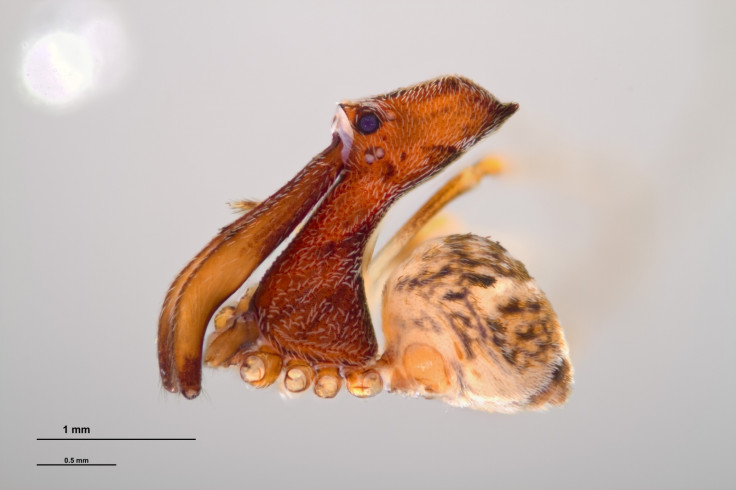Pelican spider: Meet the arachnid that looks like a small pelican and feeds on its friends
They eat other spiders, with fava beans and a nice chianti.

Until recently, little was known of the pelican spider, a rare arachnid breed whose fossils were discovered in 1854. Living specimens were discovered in Madagascar in 2000. A new study published in Zookeys has shed light on the peculiar African species.
Here's what makes the pelican spider special. First, there are its looks. This creature looks more pelican than spider – hence the name – thanks to its long neck and mouth parts that resemble the bird's beak. Then, there's its diet. The pelican spider eats other arachnids, making it the species' very own Hannibal Lecter.
The curator of arachnids and myriapods for the Smithsonian's National Museum of Natural History, Hannah Wood, studied the pelican spider in depth, both in the field in Madagascar and through museum collections.
Wood found that there were actually 26 different kinds of pelican spiders, 18 of which had never been documented. They can be recognised by their jaw-like mouth parts and long necks, which they use to prey on other spiders. "These spiders attest to the unique biology that diversified in Madagascar," she said.
Pelican spiders hunt at night. They follow silky draglines that lead them right to their meal of the evening. Once they find their prey, they impale it on their jaw full of fangs and hold it at a safe distance from their own bodies, preventing possible counter-attacks. Then, it's dinner time.
Today's pelican spiders are "living fossils," Wood says, meaning they are extremely similar to their fossils record discovered in 1854 that date back to at least 165 million years ago. Modern-day pelicans spiders can also be found in South Africa and Australia, which would mean their ancestors originated on Earth's supercontinent Pangaea and got distributed when it started to break off, 175 millions years ago.
While Wood's dedication and thorough observations on hundreds of specimens allowed her to discover 18 new pelican spider species, she thinks there are way more that we still don't know about. "I think there's going to be a lot more species that haven't yet been described or documented," she said.
The spiders she collected during her field work in Madagascar will join the US National Entomological Collection at the Smithsonian, the second-largest insect collection in the world.
Wood notes that these rare species have been preserved thanks to the biodiversity of the island of Madagascar. However, the island is threatened with mass deforestation, which will have irreparable consequence on its ecosystem. Conservation efforts would protect the secrets of the island's forests.























